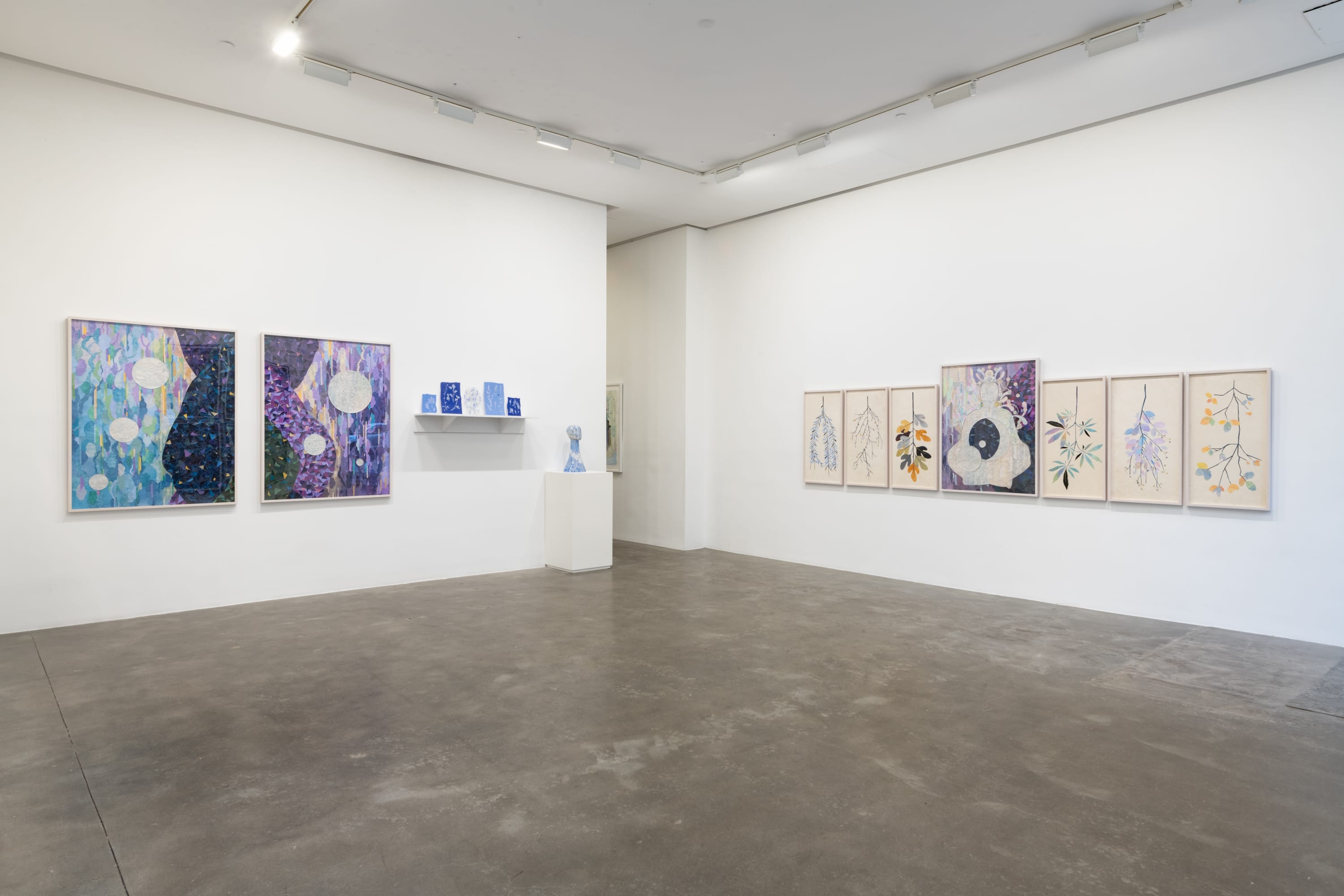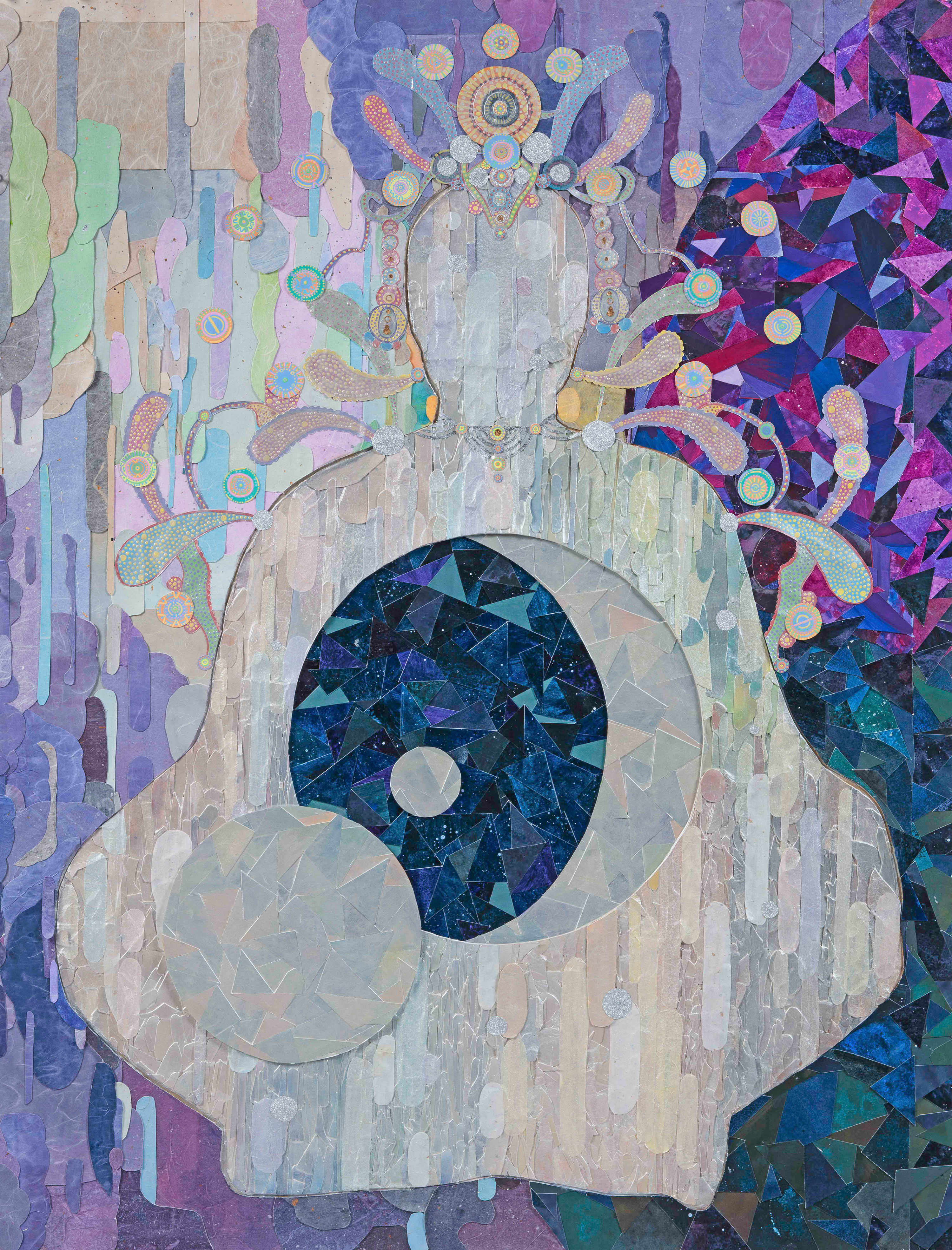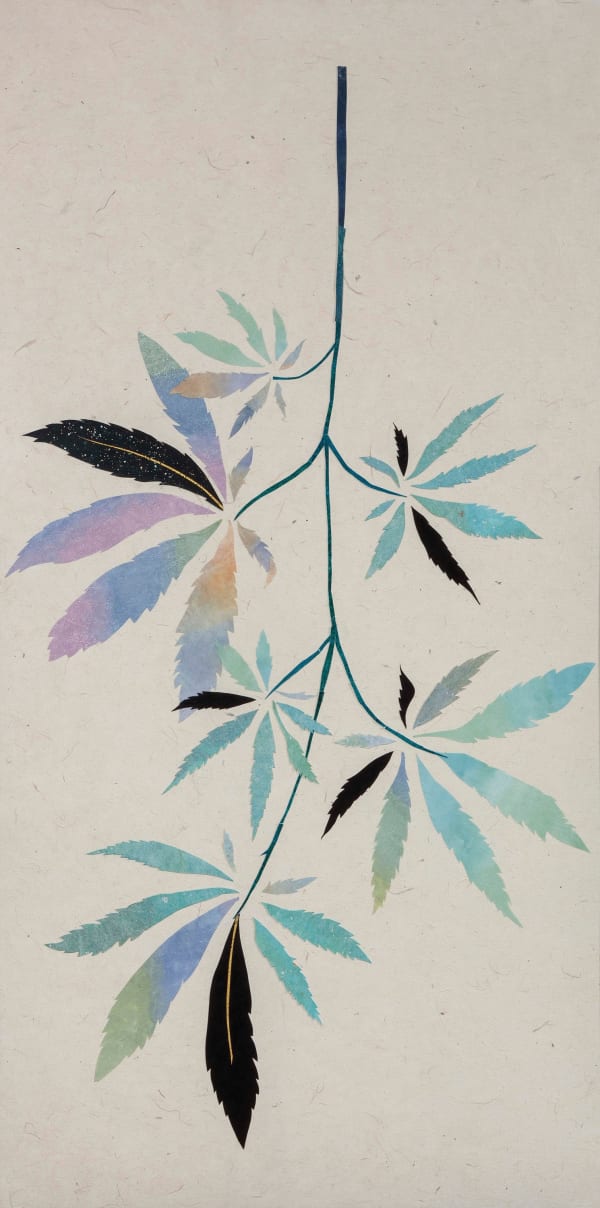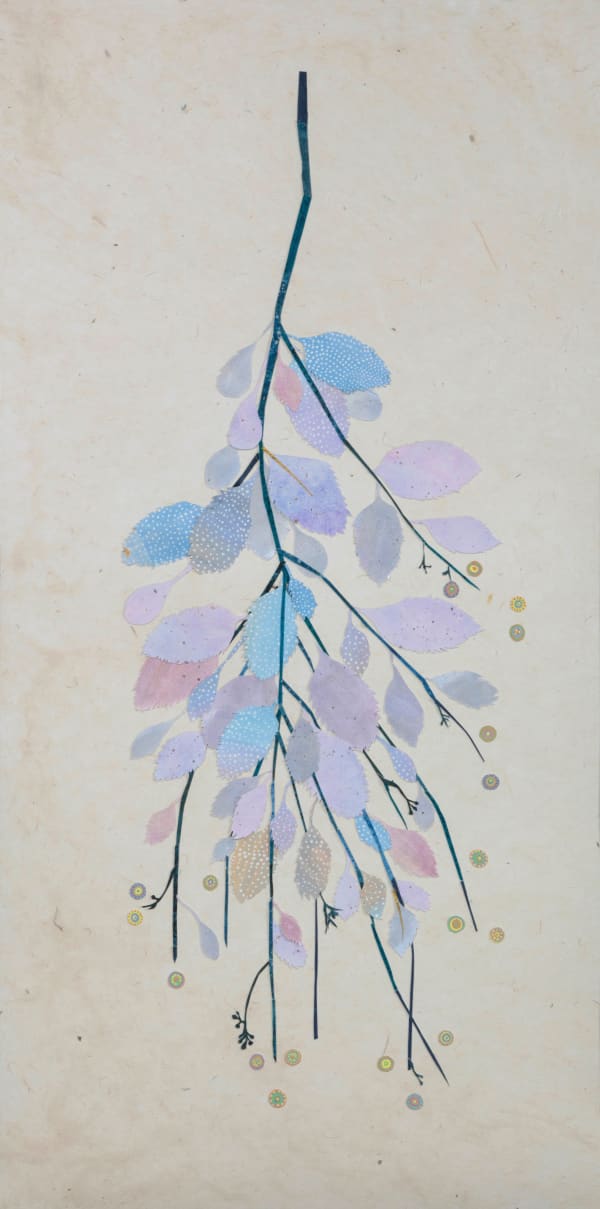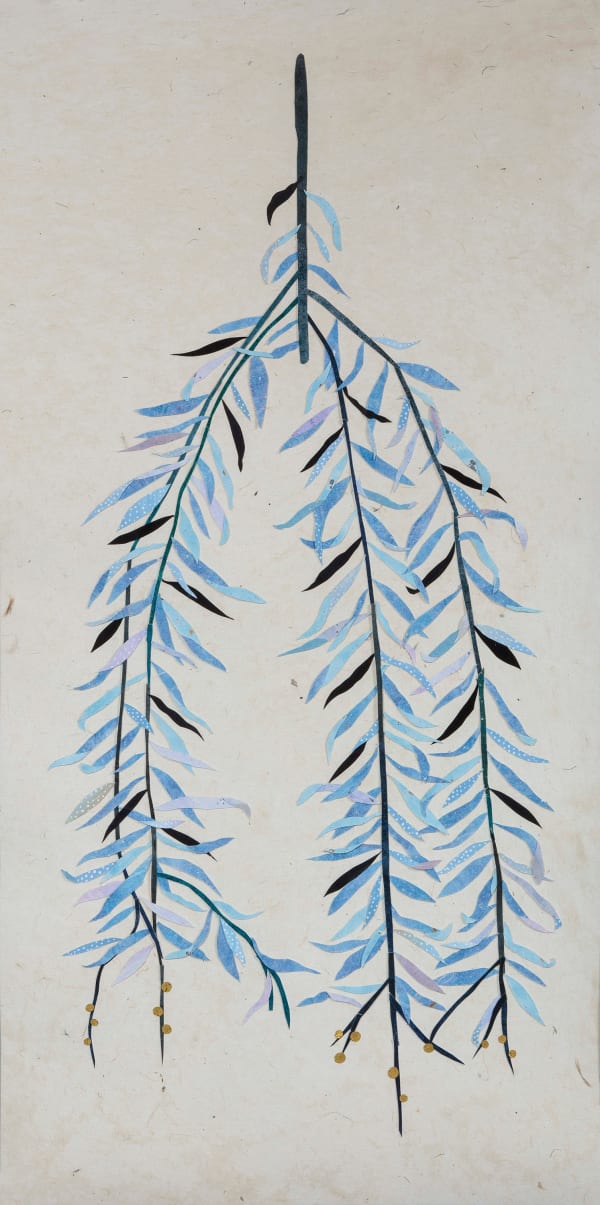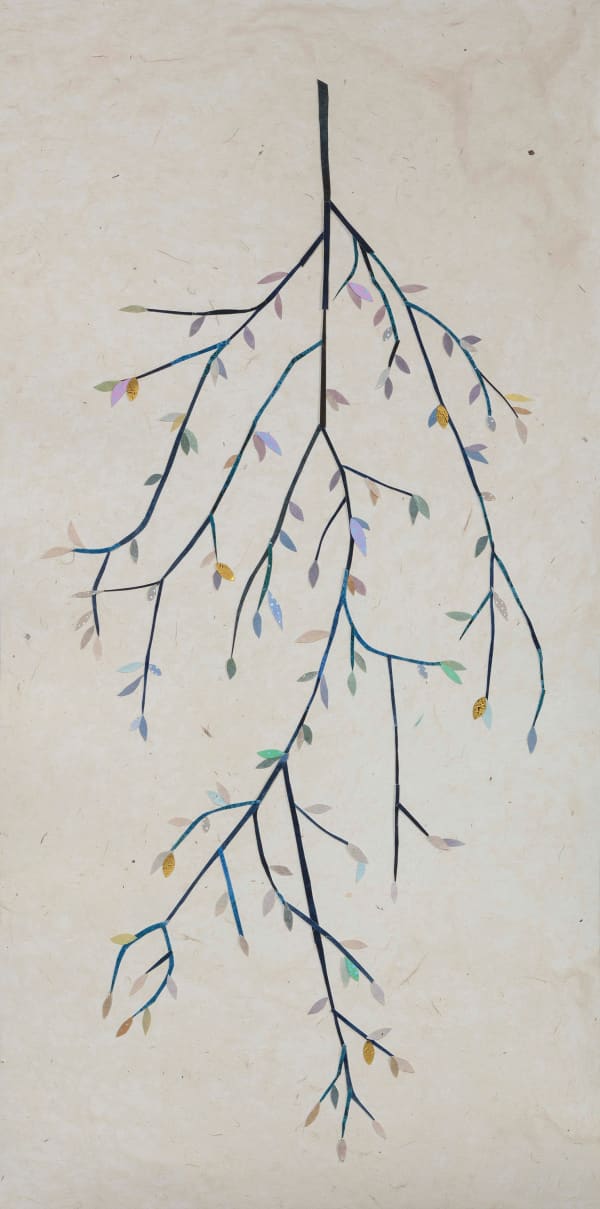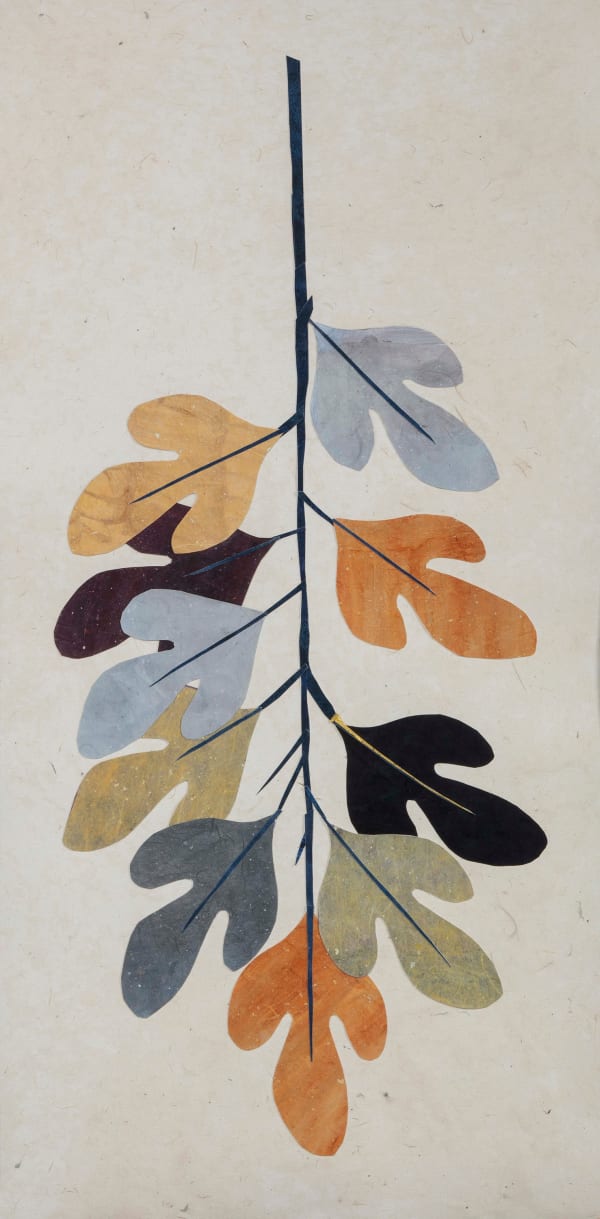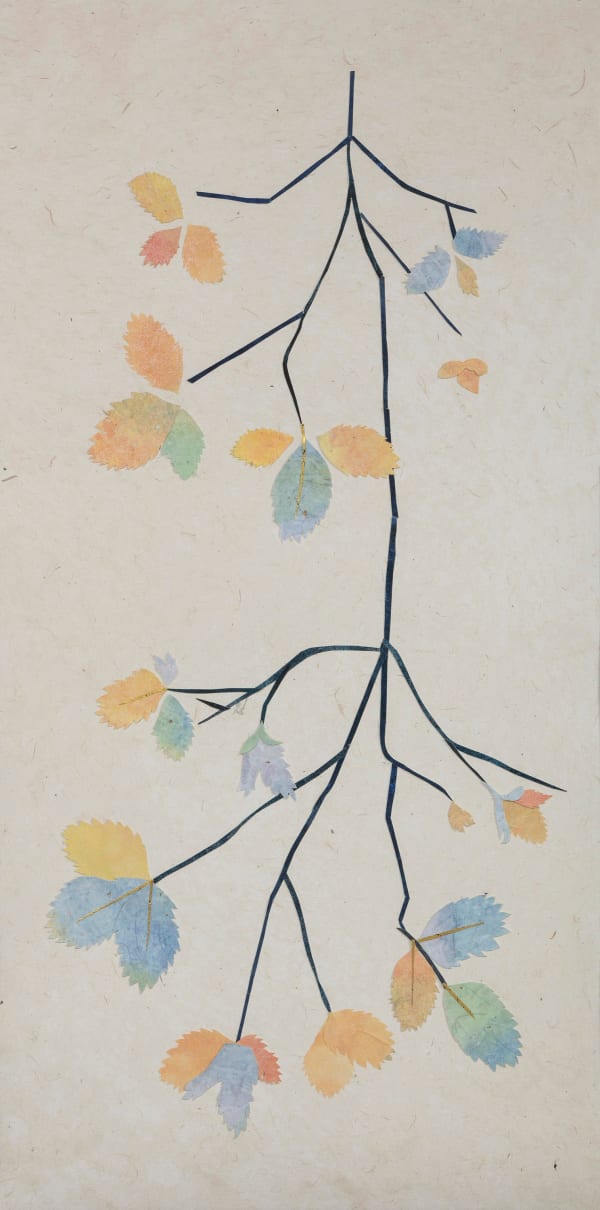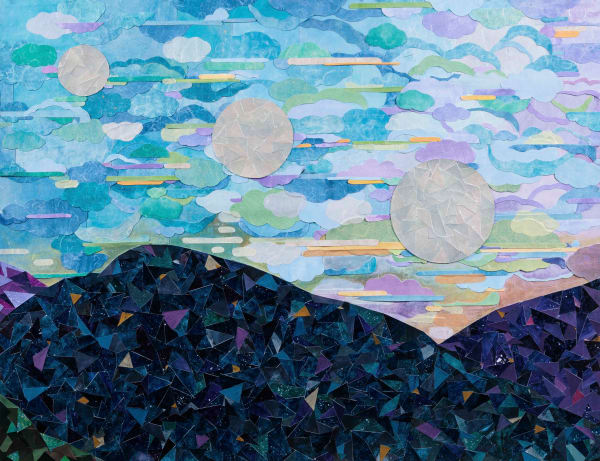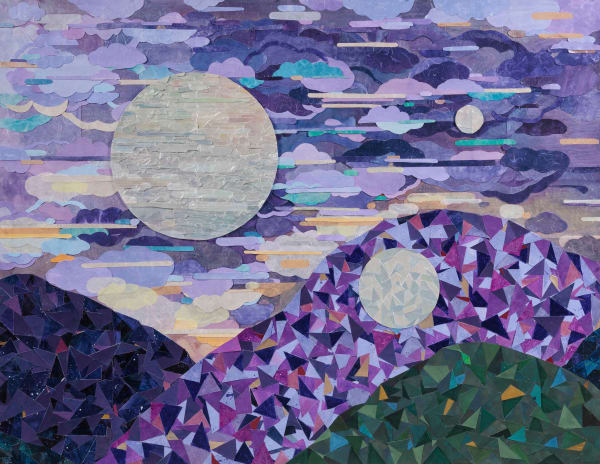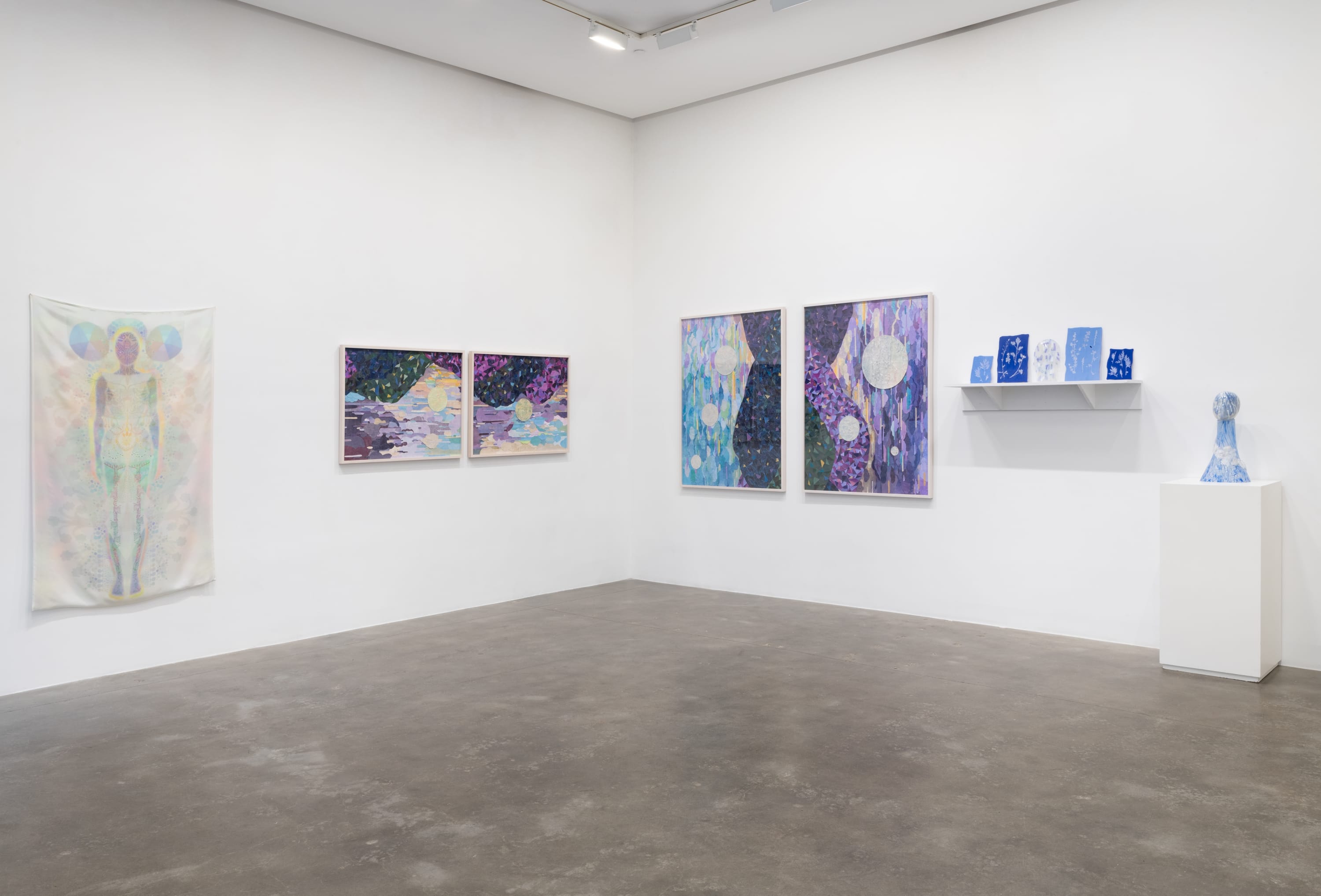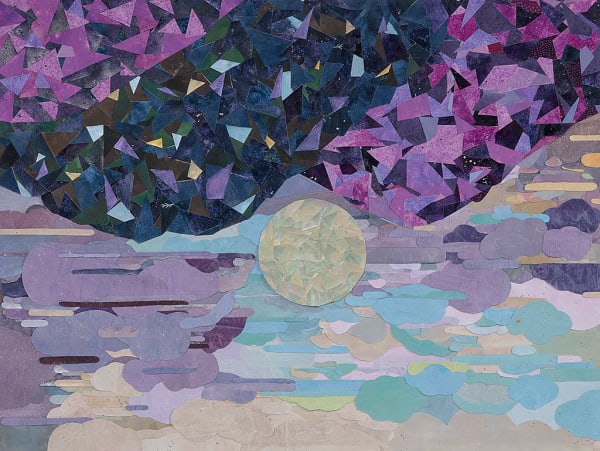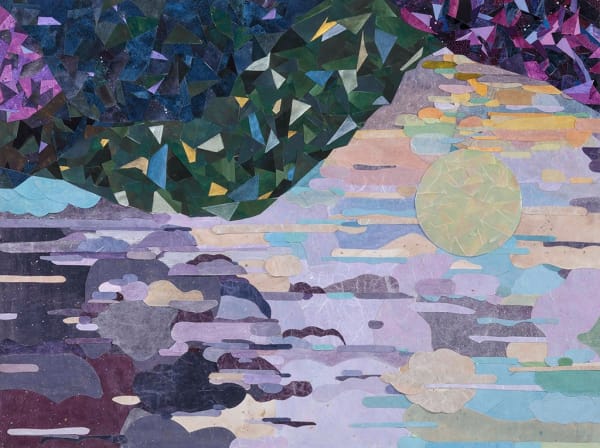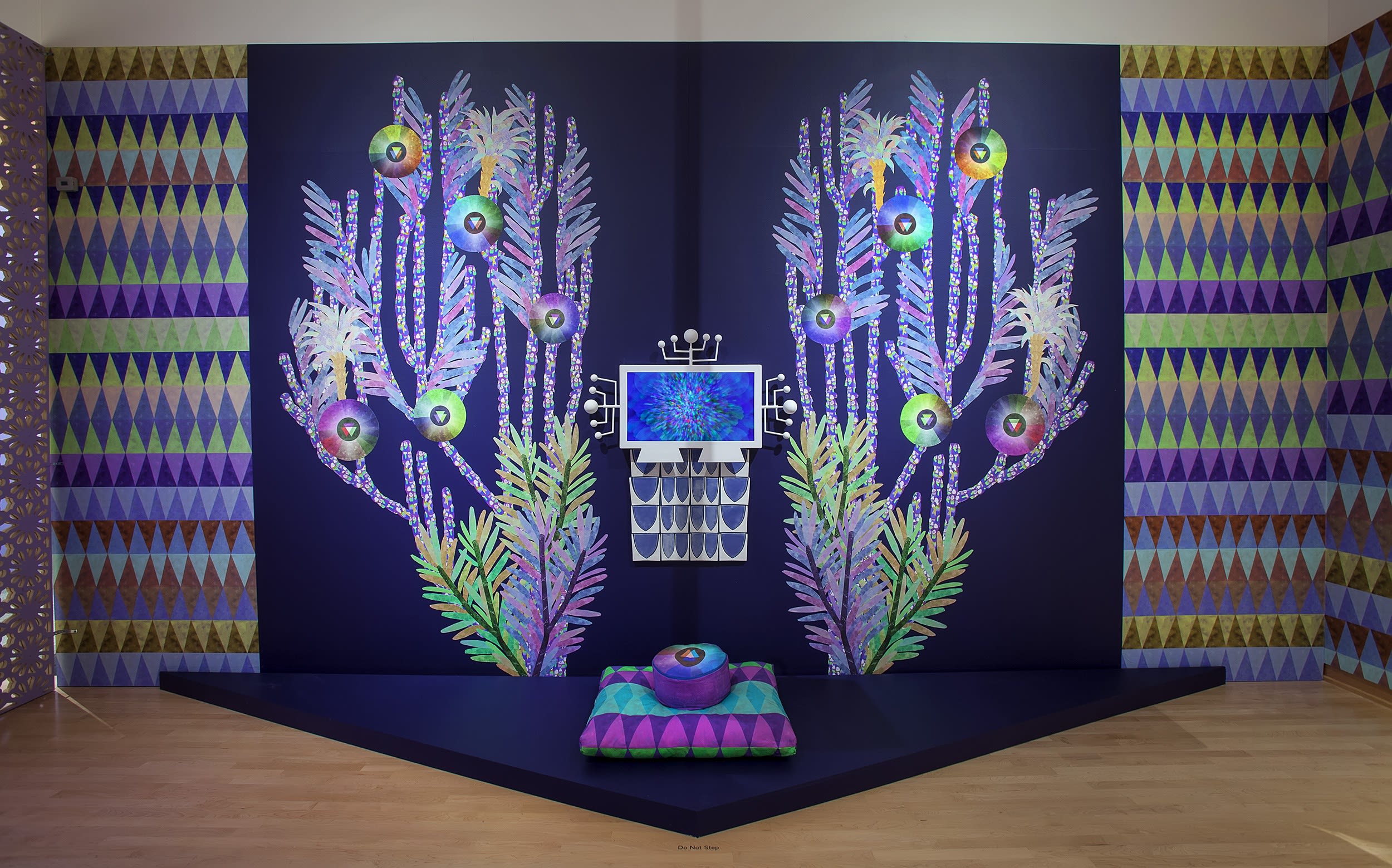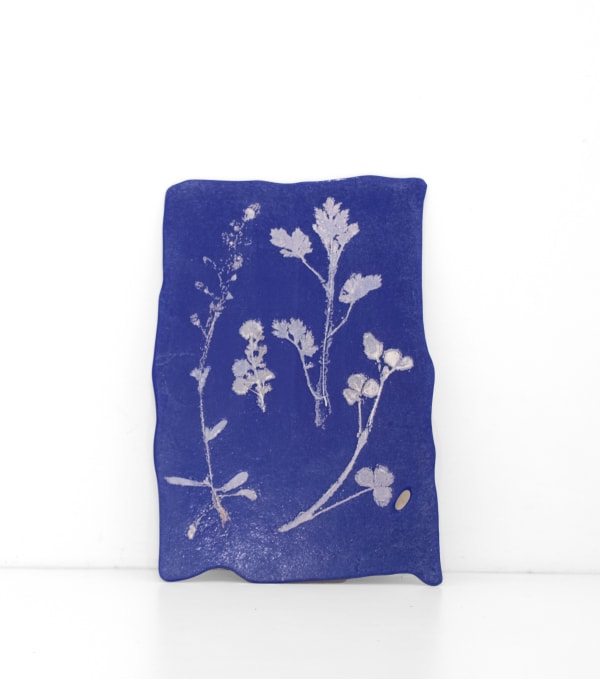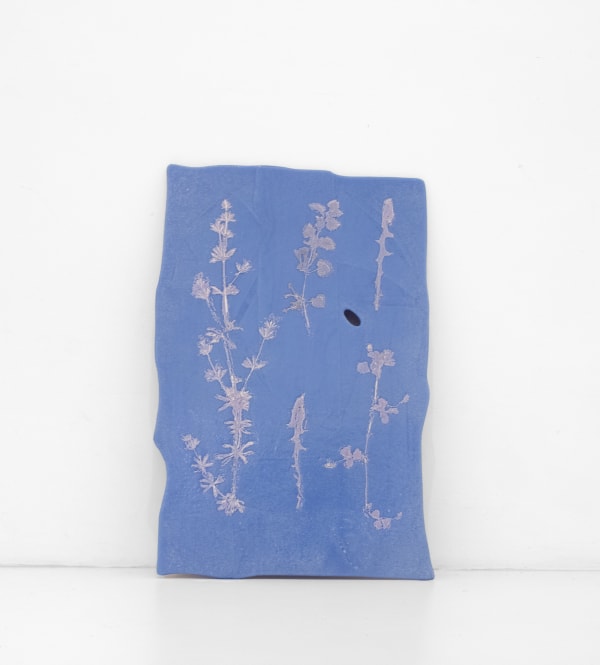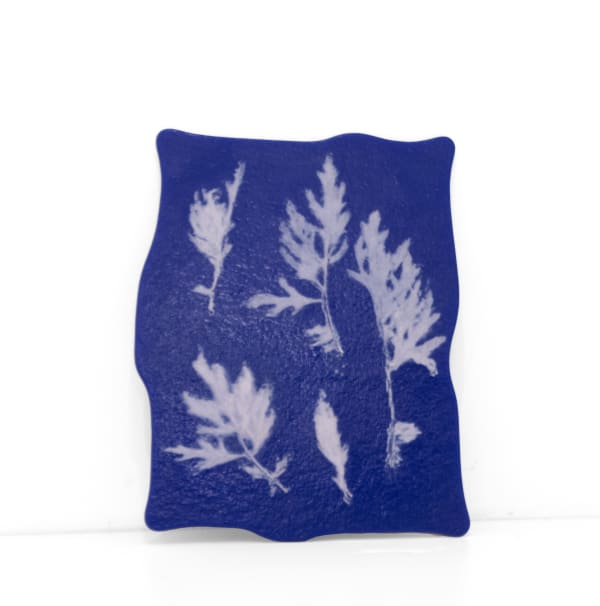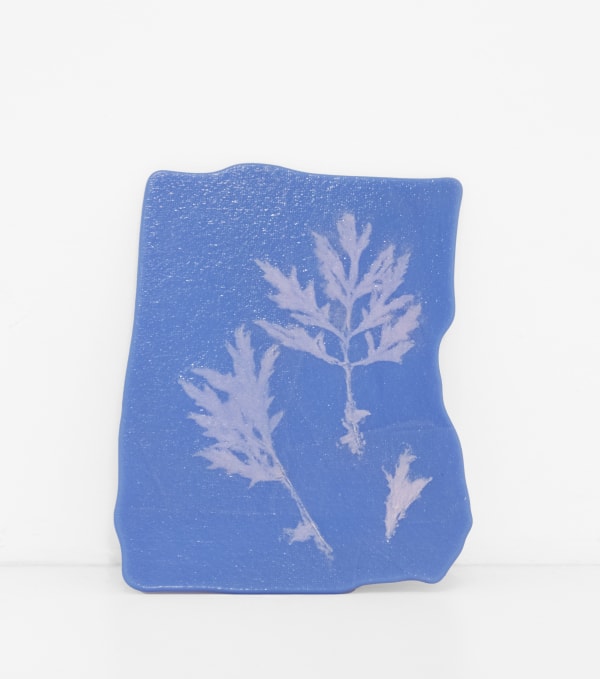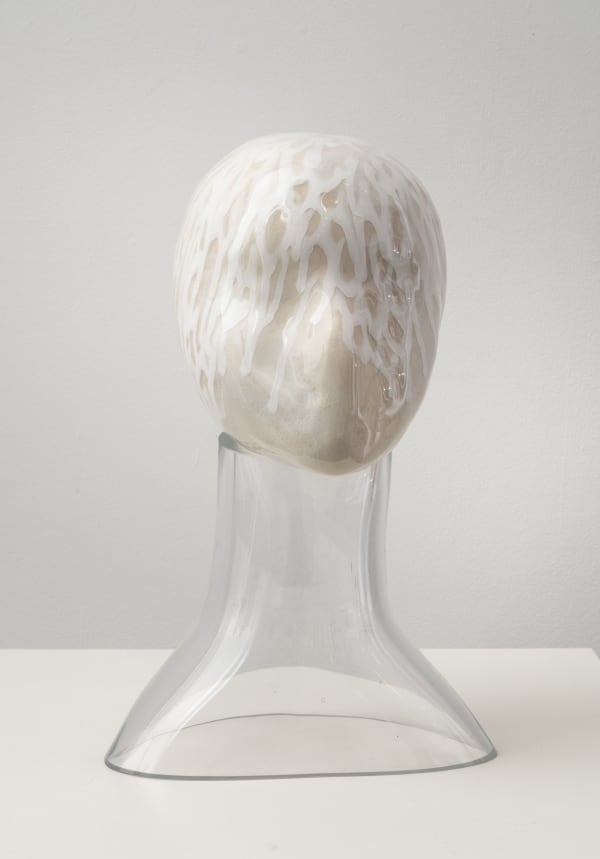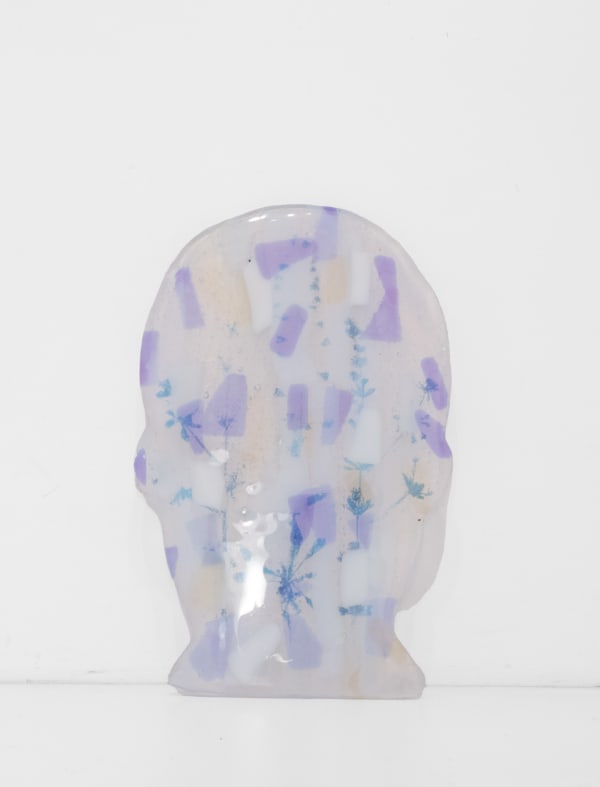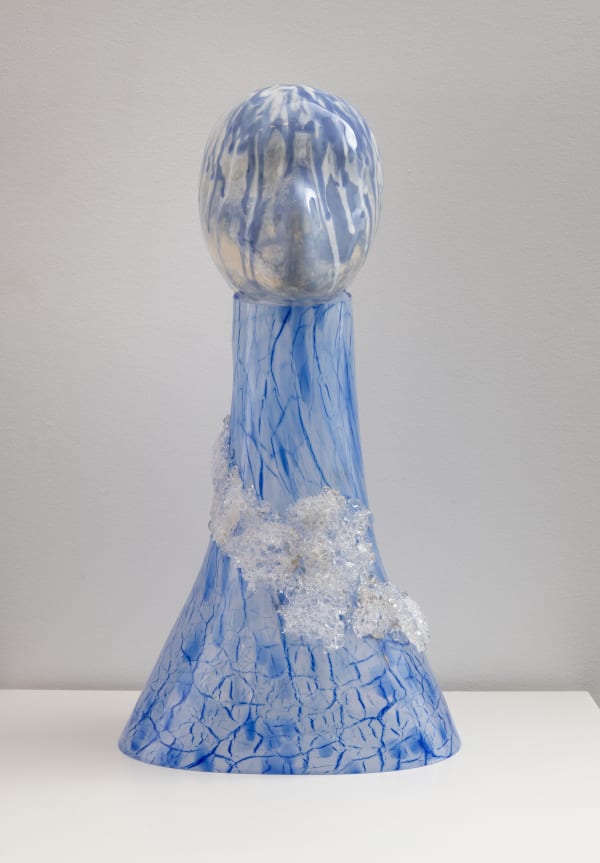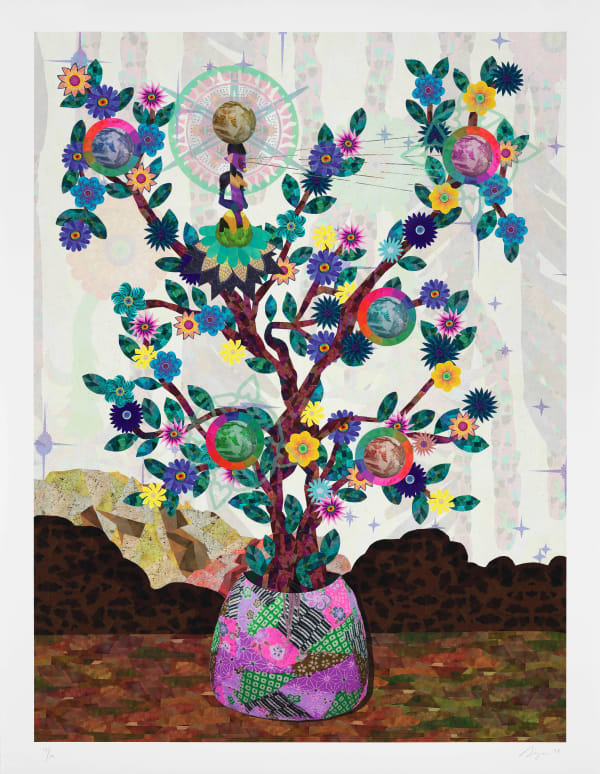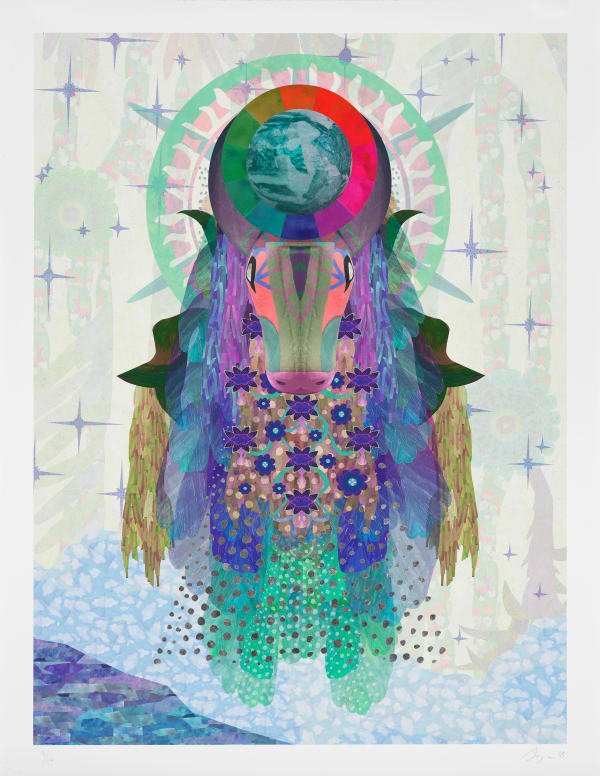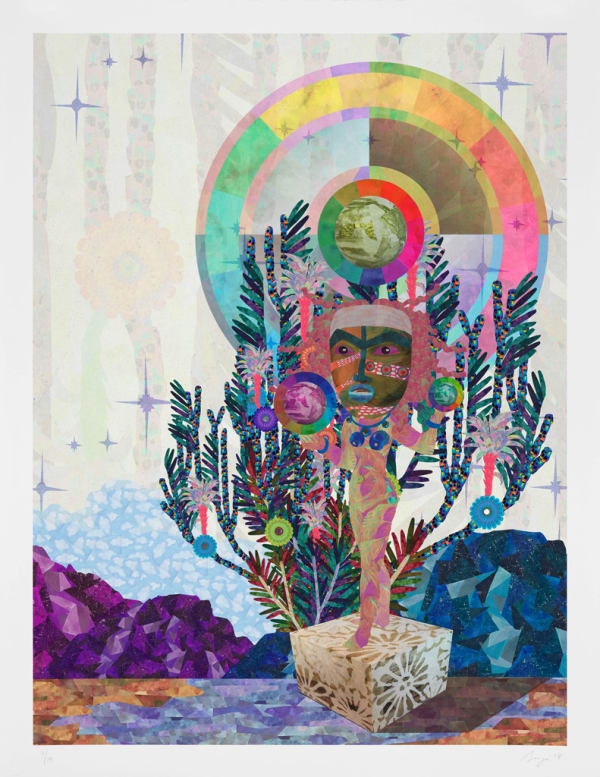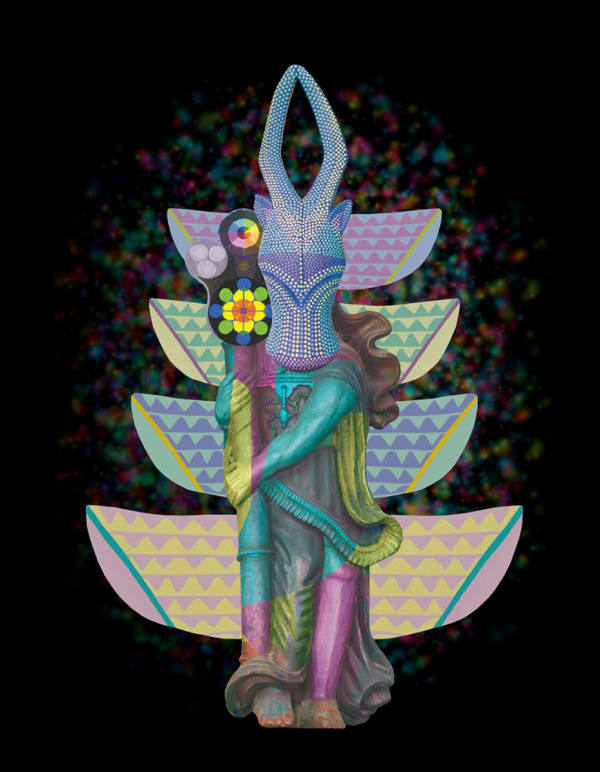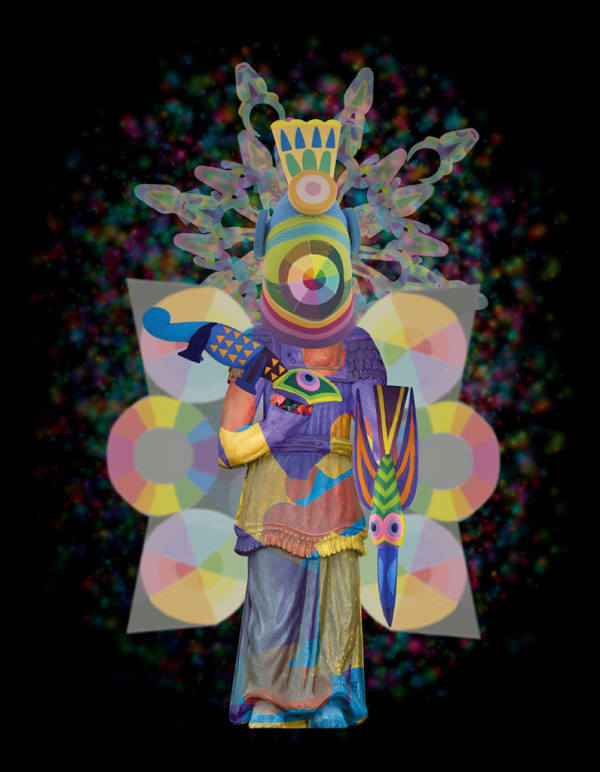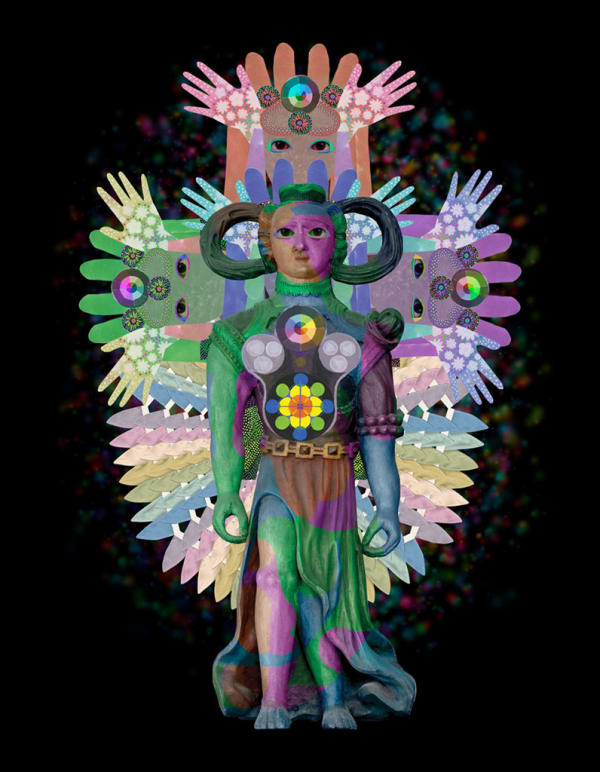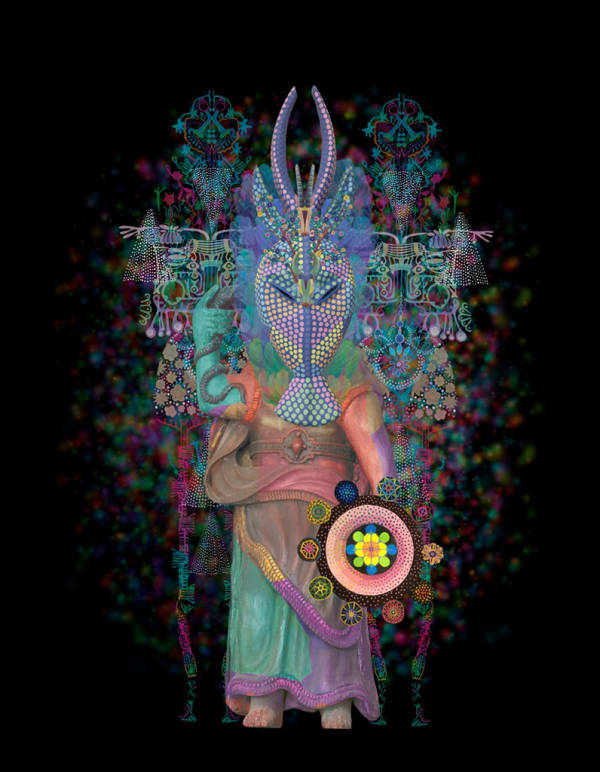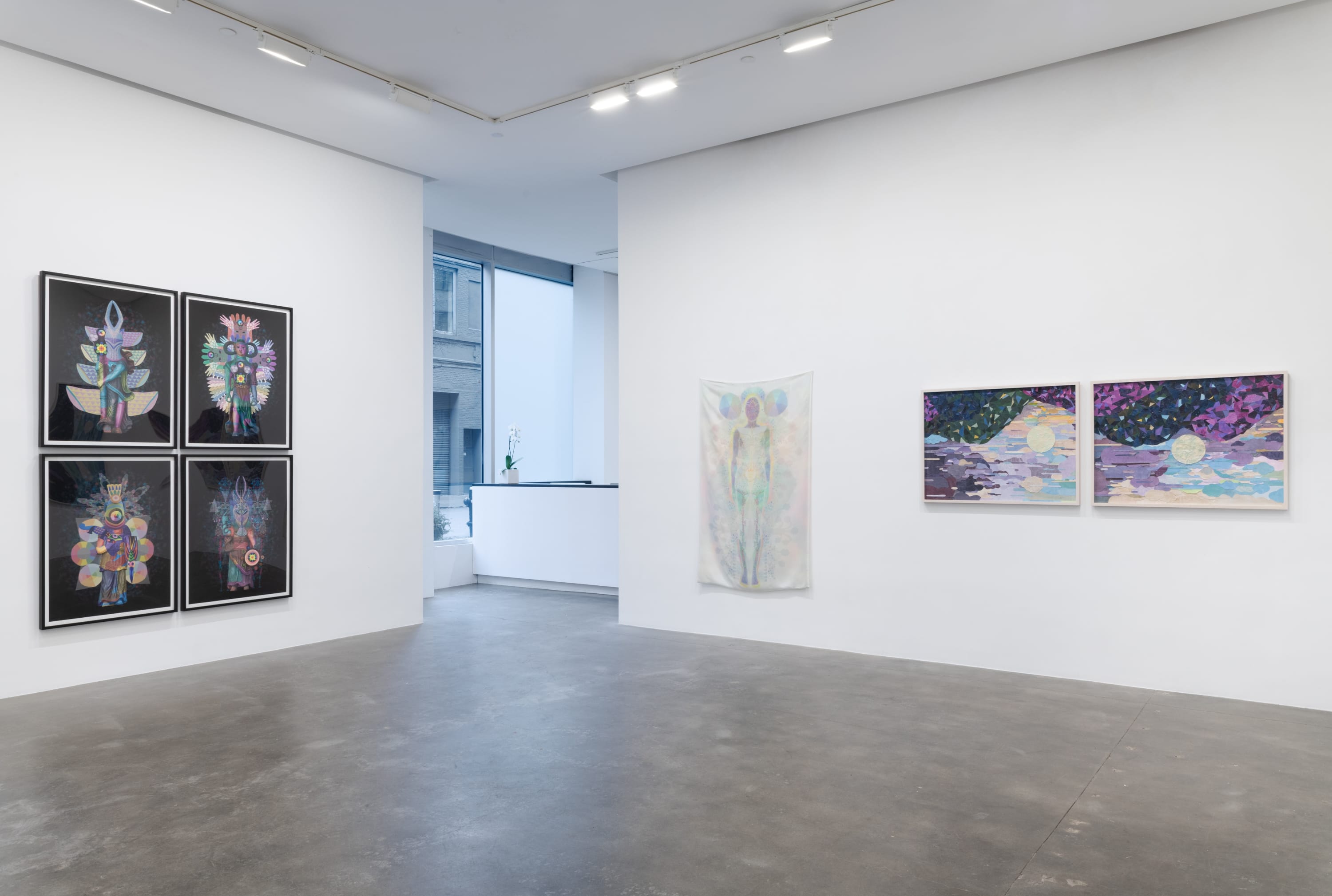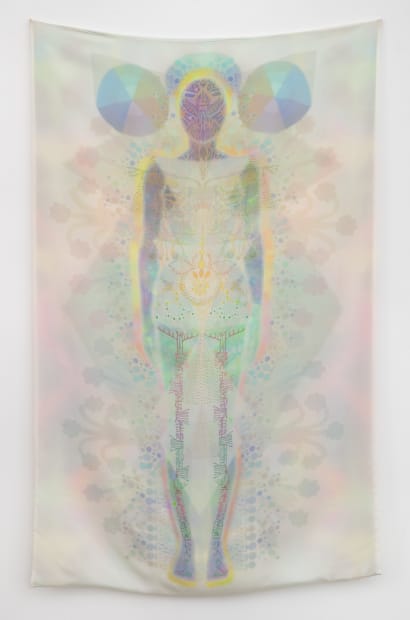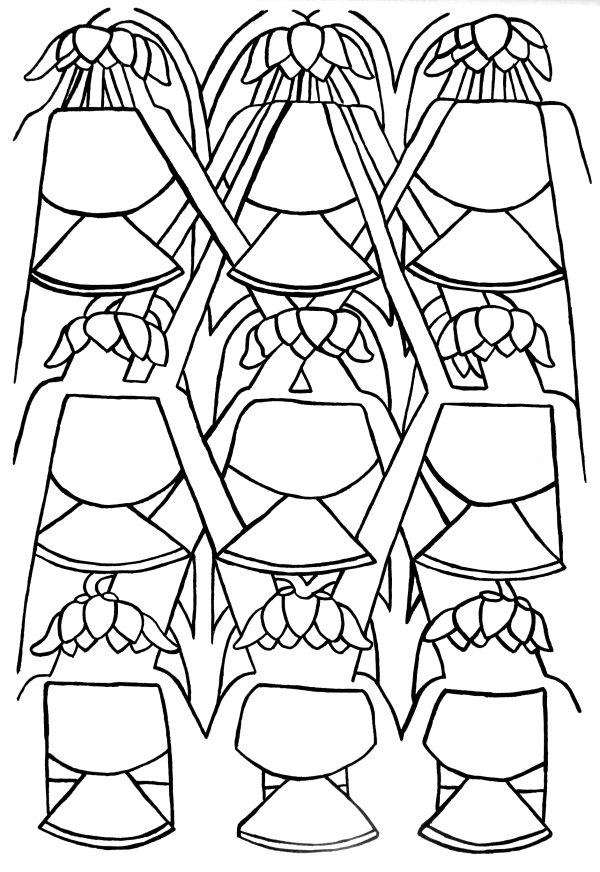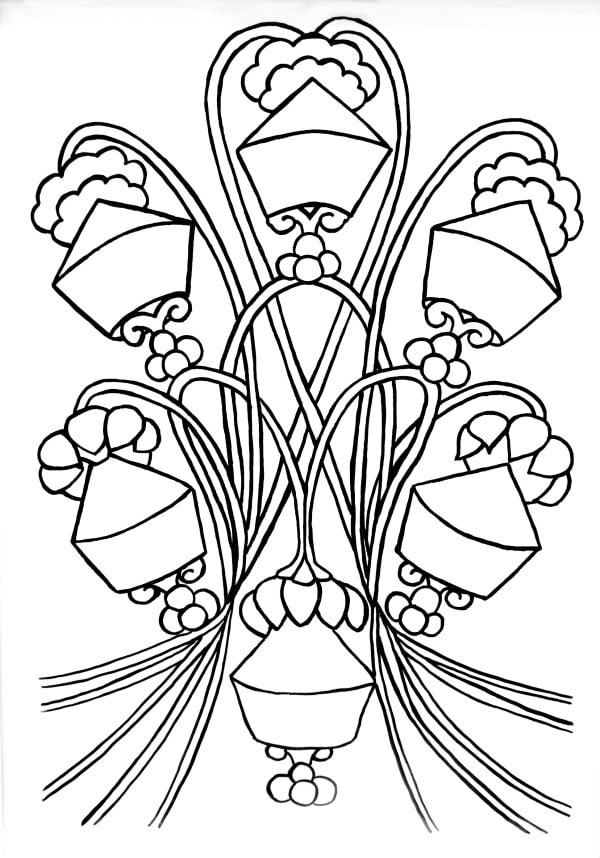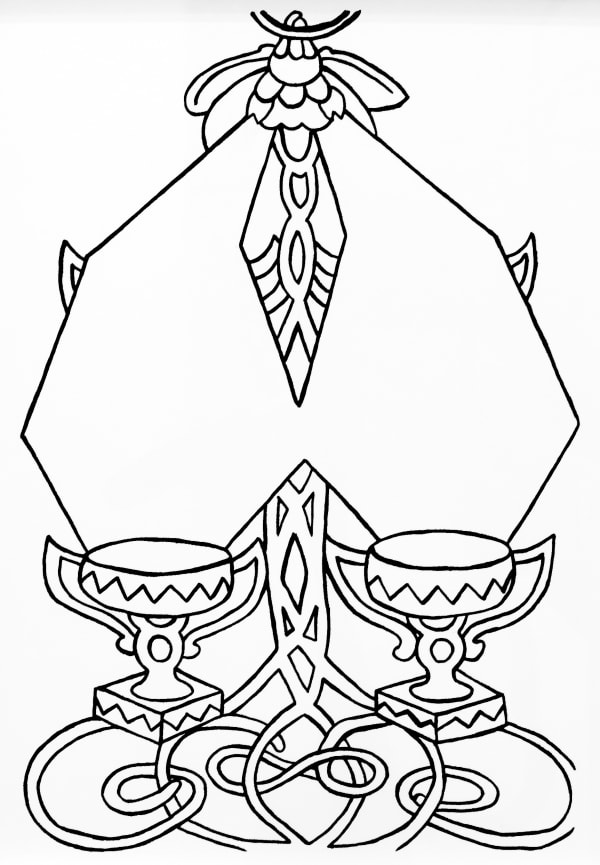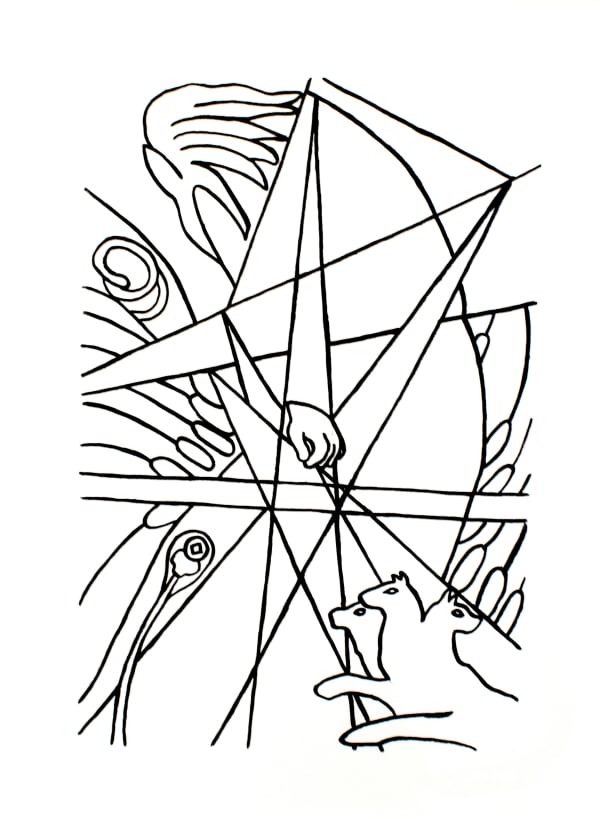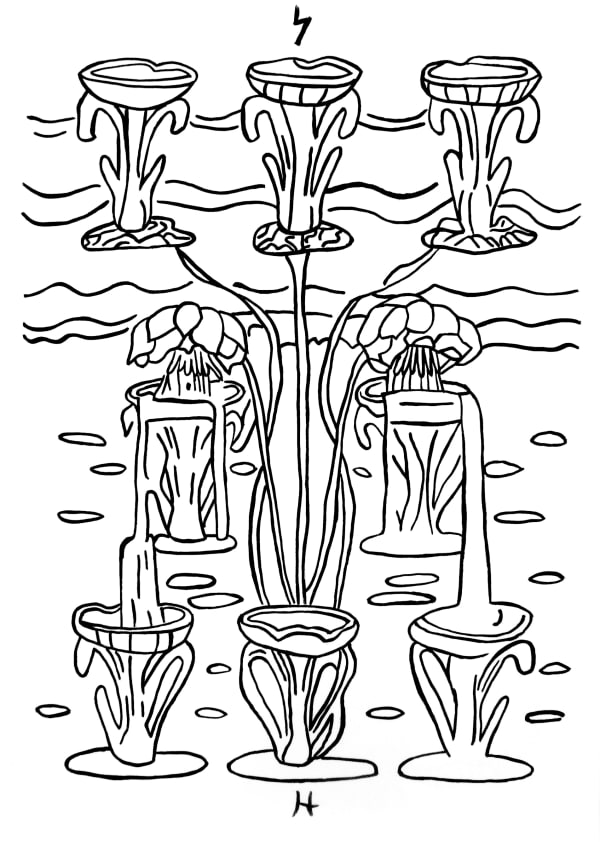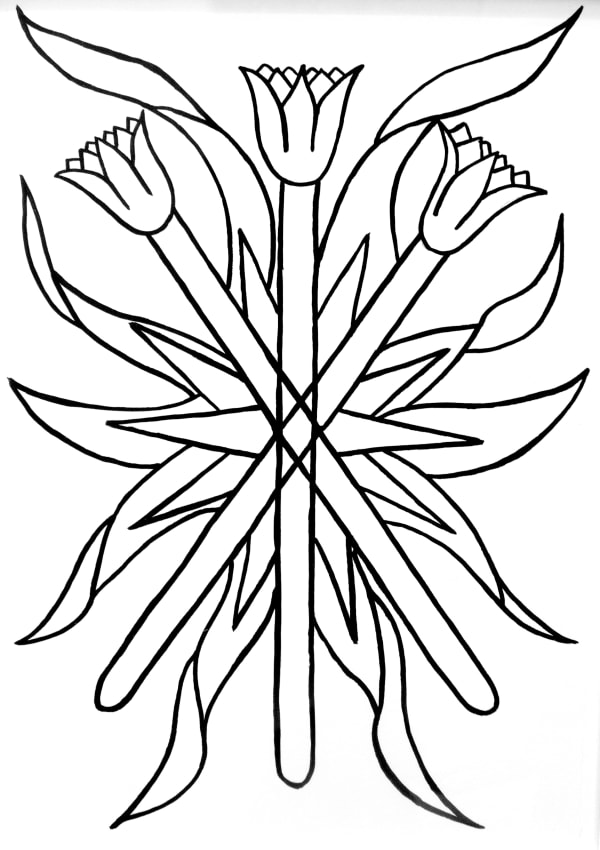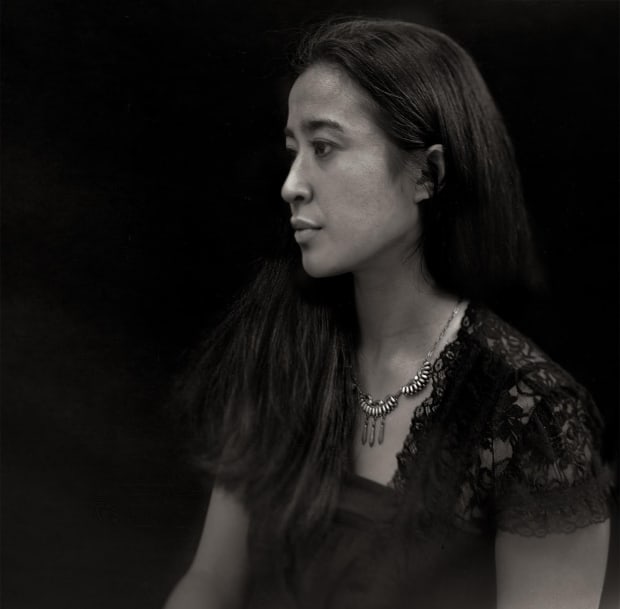-
SAYA WOOLFALK
THE WOODS WOMAN METHOD
in collaboration with Leslie Tonkonow Artworks + Projects
-
The Woods Woman Method is the most recent manifestation of the artist’s ongoing exploration of folkloric tradition, worldbuilding, and hybrid identity, accomplished through an elaborate fiction rooted in her family heritage. Combining elements of African American, Japanese, and European cultures, Woolfalk alludes to anthropology, feminist theory, science fiction, Eastern religion, and fashion, in telling the story of the Empathics, the chimeric species of botanic humanoid beings with a highly evolved ability to understand the experiences of others.
-
 Installation view, Saya Woolfalk: The Woods Woman Method at Susan Inglett Gallery, NYC.
Installation view, Saya Woolfalk: The Woods Woman Method at Susan Inglett Gallery, NYC. -
The exhibition features drawings, prints, mixed-media collages, sculpture, and video. Among the works on view is Birthing a New Sky: Starship Moon Cycle (2022), an inspired visualization of the artist’s sister, sitting in a lotus position, anticipating the birth of her daughter. Woolfalk writes:
For a new sky to be born she must split herself into a million pieces. Each cell in her body replicates itself, spinning in twirling orbits. Her atomized insides burst apart, cascading into the void around her. Swirling and churning, one cell makes its way back to her center, where her heart had been. This brave new life expands, forcing its way out as new light, new land – a new sky.
-
 SAYA WOOLFALK, BIRTHING A NEW SKY: STARSHIP MOON CYCLE, 2022
SAYA WOOLFALK, BIRTHING A NEW SKY: STARSHIP MOON CYCLE, 2022 -
Created by Woolfalk as an idealized metaphor for cultural hybridity, the Empathics blend racial, ethnic, and species characteristics, gaining supernatural powers of compassion through their mix of qualities.
- Wendy Vogel, Artforum
-
The Woods Women, a secret society of forest dwellers, first emerged within Woolfalk’s Empathic Universe as she prepared for her solo exhibition at the Newark Museum of Art in 2021. While an Artist-in-Residence at the Museum from 2019 to 2021, she closely engaged with its renowned Herbarium and Hudson River School collections.
At the turn of the century, for instance, collecting plants was often a way for women to participate in the male-dominated field of science. Famous herbaria include those collected by poet Emily Dickinson and writer and conservationist Beatrix Potter. The very nature of the herbarium itself is nuanced with the history of collecting and gendered biases.
The Hudson River School, in contrast, consisted of a group of male artists whose pastoral works came to be identified as a true American art - a national style.
Within the framework of U.S.-based manifest destiny, these tremendously influential paintings can be seen as constructed mythologies and contextualizations of nature and the human that conceal underlying narratives of erasure, gender, radicalization, and a stolen land in crisis.
- Alexandra Chang, Field Notes from the Empathic Universe
-
Woolfalk acknowledges these early women of science in a series of delicate cut paper renderings of native medicinal herbs collected by the community for the Museum near the turn of the last century. Using similar materials and technique, she posits an alternative American creation myth in her own speculative landscapes, Birthing a New Sky: Manuscripts 3 and 4 (2021), and 5 and 6 (2022). While appearing to be simple abstractions, these works are quite complex, composed of hundreds of intricately pieced and layered elements created from handmade Japanese papers that she has painted and stained with watercolor and gouache, Japanese silver foil, and acrylic medium. The artist spent the summers of her youth in Gifu with her grandmother, learning local textile and paper crafting techniques that infuse her practice to this day.
-
 Installation view, Saya Woolfalk: The Woods Woman Method at Susan Inglett Gallery, NYC.
Installation view, Saya Woolfalk: The Woods Woman Method at Susan Inglett Gallery, NYC. -
A prolonged study of the Museum’s collection of Hudson River School paintings prompted Woolfalk to reconsider their position in American art history. Pushing aside our colonial past and efforts to erase an indigenous people and culture in the service of American imperialism, Woolfalk imagines an alternative approach to landscape painting. Looking to the work of painter Richard Mayhew, an artist of Native and African American descent, she likewise internalized an emotional response to place, creating a “mindscape.” It was the desire to be inside this world rather than looking on from the outside that prompted the creation of The Woods Women.
Being an American [now] is different from being one in the era of the Hudson River School, yet the way these artists taught us to think about the United States has left an idelible mark. Even today, it is not uncommon for strangers to ask me where I'm from. When I respond that I am from New York, some of these strangers, dissatisfied with my answer, follow up with, 'Where are you from originally?' The question implies that I am not of this place, somehow not quite American.My response to such questioning has been in part to focus on the notion of hybridity in my art practice, to create artworks that defy classification. Working across media and conceptual boundaries, I create bodies of work that seem to constantly shift and evolve - a series of modular parts that stabilize for a moment, then separate again, with the potential to become something else.- Saya Woolfalk, Field Notes from the Empathic Universe
-
 Installation view, Visionary Reality Outpost at John Michael Kohler Arts Center, Sheboygan, WI
Installation view, Visionary Reality Outpost at John Michael Kohler Arts Center, Sheboygan, WI -
Woolfalk asserts a vibrant and maximalist visual language for the Empathics, seen in motifs such as floral and botanical patterns, and radial, almost mandala-like symbols in various hues and tones. Their clothing is ostentatious and reminiscent of ceremonial garb from across cultures, seen in their ornate headdresses and brightly patterned and adorned cloaks and gowns. Tablets and busts made from glass and ceramics point to Woolfalk's anthropological approach to worldbuilding, presenting viewers with objects-as-artifacts.
-
Industry is not foreign to the world of the Empathics. One such entity, ChimaTEK, provides Empathics the option of transcendent body modifications that render concepts such as sex, race, and ethnicity irrelevant. In this way, the corporation's aims appear to be more utopic than those seen in our own universe, however the flattening and erasure of difference implicit in ChimaTEK’s promises have a sinister undercurrent.ChimaTEK customers are able to access a virtual container known as the ChimaCloud, in which they place the details and particulars of their former identities, a reflection of the intangible social spaces where we document our own lives. Each plate in the Encyclopedia of Cloud Divination is a recombination of the multiple identities uploaded into the ChimaCloud. The imagery spawned by the Cloud is vibrant and distinct, with the potential to become an entirely new narrative universe.
-
In the series of large-scale prints, The Four Virtues (2017), Woolfalk references classical philosophy in depicting the physical embodiments of Prudence, Fortitude, Justice, and Temperance, qualities that are vital to the ethos of the Empathic Universe.
-
 Installation view, Saya Woolfalk: The Woods Woman Method at Susan Inglett Gallery, NYC,
Installation view, Saya Woolfalk: The Woods Woman Method at Susan Inglett Gallery, NYC, -
 SAYA WOOLFALK, CLOUDSKIN 5 (WHITE), 2016
SAYA WOOLFALK, CLOUDSKIN 5 (WHITE), 2016 -
-
 SAYA WOOLFALK, Ace of Cups, 2018/2020
SAYA WOOLFALK, Ace of Cups, 2018/2020 -
 SAYA WOOLFALK, Cups III Abundance, 2018/2020
SAYA WOOLFALK, Cups III Abundance, 2018/2020 -
 SAYA WOOLFALK, Cups IX Happiness, 2018/2020
SAYA WOOLFALK, Cups IX Happiness, 2018/2020 -
 SAYA WOOLFALK, Cups Knight, 2018/2020
SAYA WOOLFALK, Cups Knight, 2018/2020
-
 SAYA WOOLFALK, Cups of Pleasure VI, 2018/2020
SAYA WOOLFALK, Cups of Pleasure VI, 2018/2020 -
 SAYA WOOLFALK, Cups V Disappointment, 2018/2020
SAYA WOOLFALK, Cups V Disappointment, 2018/2020 -
 SAYA WOOLFALK, Disks I Ace of Disks, 2018/2020
SAYA WOOLFALK, Disks I Ace of Disks, 2018/2020 -
 SAYA WOOLFALK, Disks IV-Power, 2018/2020
SAYA WOOLFALK, Disks IV-Power, 2018/2020
-
 SAYA WOOLFALK, Disks VI Success, 2018/2020
SAYA WOOLFALK, Disks VI Success, 2018/2020 -
 SAYA WOOLFALK, Disks VIII Prudence, 2018/2020
SAYA WOOLFALK, Disks VIII Prudence, 2018/2020 -
 SAYA WOOLFALK, IV Cups of Luxury, 2018/2020
SAYA WOOLFALK, IV Cups of Luxury, 2018/2020 -
 SAYA WOOLFALK, Knight of Swords, 2018/2020
SAYA WOOLFALK, Knight of Swords, 2018/2020
-
 SAYA WOOLFALK, Princess of Cups, 2018/2020
SAYA WOOLFALK, Princess of Cups, 2018/2020 -
 SAYA WOOLFALK, Princess of Swords, 2018/2020
SAYA WOOLFALK, Princess of Swords, 2018/2020 -
 SAYA WOOLFALK, Queen of Cups, 2018/2020
SAYA WOOLFALK, Queen of Cups, 2018/2020 -
 SAYA WOOLFALK, The Sun XIX Trumps, 2018/2020
SAYA WOOLFALK, The Sun XIX Trumps, 2018/2020
-
 SAYA WOOLFALK, Trumps IX the Hermit, 2018/2020
SAYA WOOLFALK, Trumps IX the Hermit, 2018/2020 -
 SAYA WOOLFALK, Trumps the Universe XXI, 2018/2020
SAYA WOOLFALK, Trumps the Universe XXI, 2018/2020 -
 SAYA WOOLFALK, Trumps XIV Art, 2018/2020
SAYA WOOLFALK, Trumps XIV Art, 2018/2020 -
 SAYA WOOLFALK, Trumps XVI The Tower, 2018/2020
SAYA WOOLFALK, Trumps XVI The Tower, 2018/2020
-
-

SAYA WOOLFALK: The Woods Woman Method
Past viewing_room
